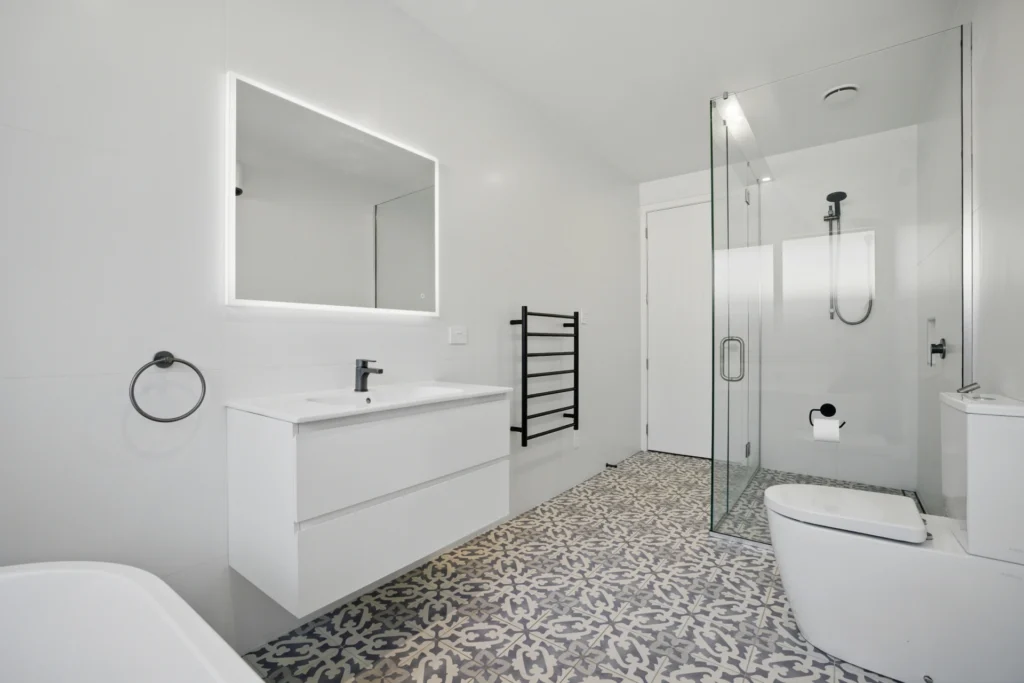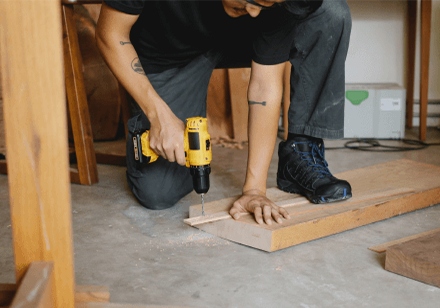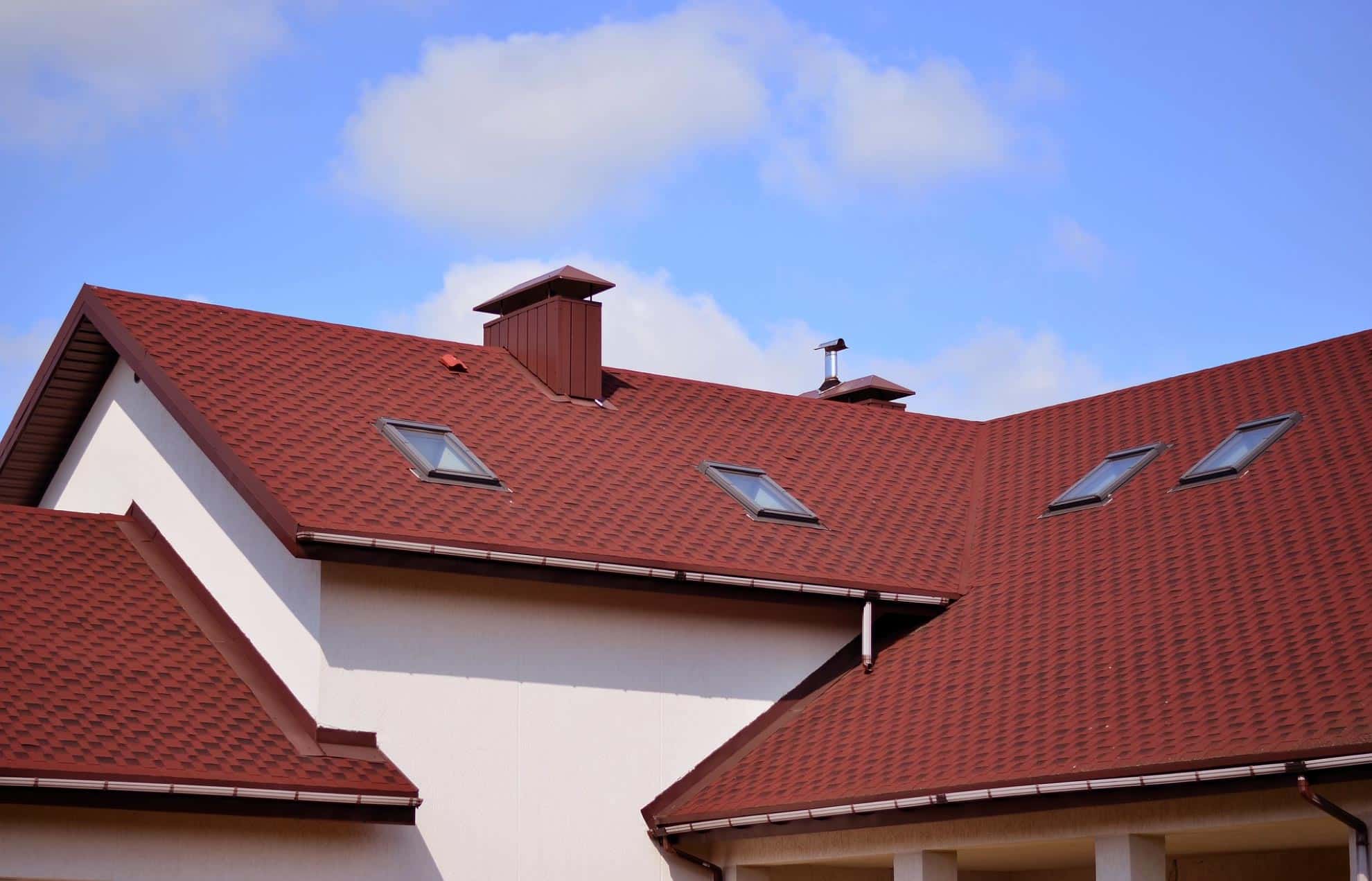Welcome to your go-to guide on how to stop condensation in your bathroom, especially if you’re living in Christchurch. If you’re dealing with foggy mirrors, damp smells, or mould creeping along your walls, you’re not alone. The cold winters, older homes, and moisture-prone conditions in Christchurch make bathroom condensation a common issue. Left untreated, it can lead to costly damage and health concerns. This post breaks down what causes condensation, why it matters, and most importantly, what you can do to fix it, whether you’re a homeowner, renter, or property manager.
To stop condensation in your bathroom in Christchurch, improve ventilation by using an extractor fan, opening windows after showers, and keeping the bathroom door open when not in use. Wipe down wet surfaces, use a dehumidifier, and consider adding insulation or heating. These steps help reduce moisture build-up common in Christchurch’s colder, damp climate.
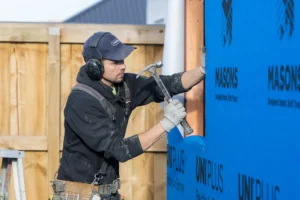
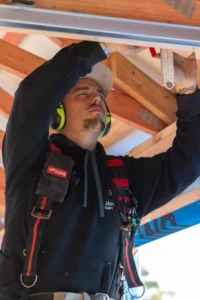
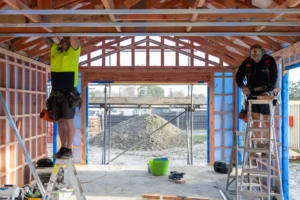


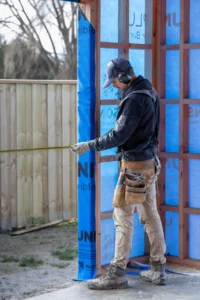
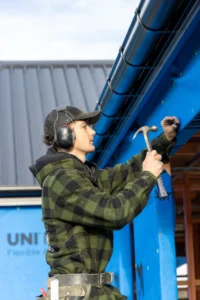
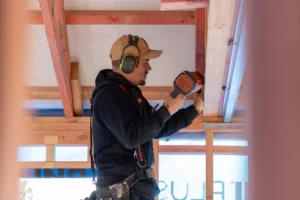
- What Causes Bathroom Condensation?
- Why You Should Care About It
- 10 Practical Ways To Stop Bathroom Condensation In Christchurch
- Christchurch-Specific Tips
- When To Call A Professional
- Tips For Renters In Christchurch
- FAQs: How To Stop Condensation In Bathroom Christchurch
- What causes bathroom condensation in Christchurch homes?
- Is condensation in the bathroom dangerous?
- What’s the quickest way to reduce condensation after a shower?
- Does using a dehumidifier in the bathroom help?
- Can I stop bathroom condensation without major renovations?
- Why is condensation worse in winter in Christchurch?
- Are landlords in Christchurch required to fix bathroom condensation issues?
- How do I know if my bathroom extractor fan is effective?
- Can insulation help reduce bathroom condensation?
- What should I do if there’s mould from condensation?
- Conclusion
What Causes Bathroom Condensation?
Bathroom condensation forms when warm, moist air comes into contact with colder surfaces like mirrors, windows, tiles, and walls. This process happens because warm air holds more moisture. When that moist air cools down quickly, such as when it touches a cold bathroom wall, the water vapor turns into liquid droplets. These droplets are what you see as foggy mirrors or water pooling on surfaces.
In most homes, bathrooms are the warmest and most humid rooms, especially after a hot shower or bath. If that moisture has nowhere to escape, it settles on any nearby cool surface. Over time, this can lead to mould, peeling paint, and damp smells. It’s not just a cosmetic issue, it can affect your health and damage your home.
Here are the most common reasons why condensation builds up in bathrooms:
- Long Hot Showers
Taking long, steamy showers produces a large amount of moisture. The more steam you create, the higher the chance it will cling to cold walls, ceilings, and mirrors. Unless the room is ventilated well, this moisture has nowhere to go. - Poor Ventilation
Many bathrooms in Christchurch either lack extractor fans or have fans that aren’t strong enough. Without good airflow, moist air stays trapped in the room. That trapped humidity settles on surfaces and leads to ongoing condensation issues. - Cold Temperatures
In colder seasons, the temperature difference between the warm air and cold bathroom surfaces becomes more extreme. The bigger this gap, the faster condensation will form. Cold walls and windows are especially prone to moisture build-up. - Inadequate Insulation
Poorly insulated walls or ceilings can’t retain warmth well. As a result, they stay cold even when the room is heated. This makes them a prime target for condensation. Homes without double-glazed windows are even more vulnerable.
This issue is more common in Christchurch due to several local factors. Many older homes lack modern insulation or effective ventilation systems. Colder winters make it harder to maintain indoor warmth. Rental properties often don’t have extractor fans installed, leaving tenants with limited options for reducing moisture. Together, these elements create the perfect environment for condensation to form and linger.
Understanding these causes is the first step in fixing the problem. Whether you rent or own your home, there are simple changes you can make to control moisture and protect your space from long-term damage.

Why You Should Care About It
Bathroom condensation might seem harmless at first. A fogged-up mirror, a few drops on the wall, it’s easy to ignore. But if you live in Christchurch, where winters are cold and bathrooms often lack proper ventilation, condensation can turn into a serious and costly problem. Understanding the risks can help you take early action before the damage builds up.
Mould And Mildew
When warm, moist air clings to cold surfaces like tiles, mirrors, or ceilings, it creates the perfect breeding ground for mould and mildew. These fungi thrive in damp spaces and spread quickly, especially in unventilated areas. Mould not only looks and smells bad, it can damage your home and belongings. Shower curtains, grout lines, ceilings, and even wooden cabinets are at risk. If you’ve ever seen black or green patches forming around your bathroom corners, that’s mould growing because of unchecked condensation.
Wall And Ceiling Damage
Repeated exposure to moisture weakens building materials. Plasterboard can swell and crack. Paint begins to bubble. Over time, moisture seeps behind walls and ceilings, leading to structural damage that often requires professional repair. In Christchurch’s older homes, where bathrooms may not have been updated for years, this type of water damage is common and expensive to fix. What starts as small, invisible damage often leads to full renovations down the line.
Peeling Paint Or Wallpaper
Bathrooms that constantly trap moisture will show visible signs of wear. You might notice peeling paint near the ceiling or wallpaper lifting from the wall. These are signs that humidity has settled into the surface layers. Not only does this affect the appearance of your bathroom, but it also reduces the lifespan of your finishes and invites more moisture into cracks and openings. If you’re repainting or redecorating often, condensation is likely the cause.
Health Issues (Asthma, Allergies)
Damp conditions inside your home can affect your health, especially if you or your family members have asthma, sinus problems, or skin allergies. Mould spores and airborne particles from damp areas can trigger sneezing, coughing, and breathing issues. Children, older adults, and those with pre-existing conditions are especially vulnerable. In Christchurch, where winter heating often seals off airflow, indoor air quality can drop quickly if condensation is ignored.
Legal Angle: Tenancy Laws In NZ (Healthy Homes Standards)
If you’re renting in Christchurch, both landlords and tenants need to be aware of New Zealand’s Healthy Homes Standards. These laws require all rental properties to meet minimum standards for heating, insulation, and ventilation. That includes proper bathroom fans or extractor systems to control moisture. If you’re a landlord, failing to provide this could lead to legal penalties. If you’re a tenant, you have the right to request improvements if your rental doesn’t meet the standard.
Cost Of Ignoring It Over Time
Ignoring bathroom condensation isn’t just bad for your health and comfort, it’s expensive. What might be solved with a simple fan installation or regular ventilation can snowball into a costly repair job. Water-damaged walls, mould removal, repainting, replacing warped cabinetry, these all add up. In many Christchurch homes, especially those built decades ago, not dealing with condensation has led to complete bathroom rebuilds. Acting early saves you time, money, and stress.
Paying attention to condensation today means avoiding bigger problems tomorrow. Whether you rent or own your home, it’s worth taking simple steps to protect your bathroom, your property, and your health.
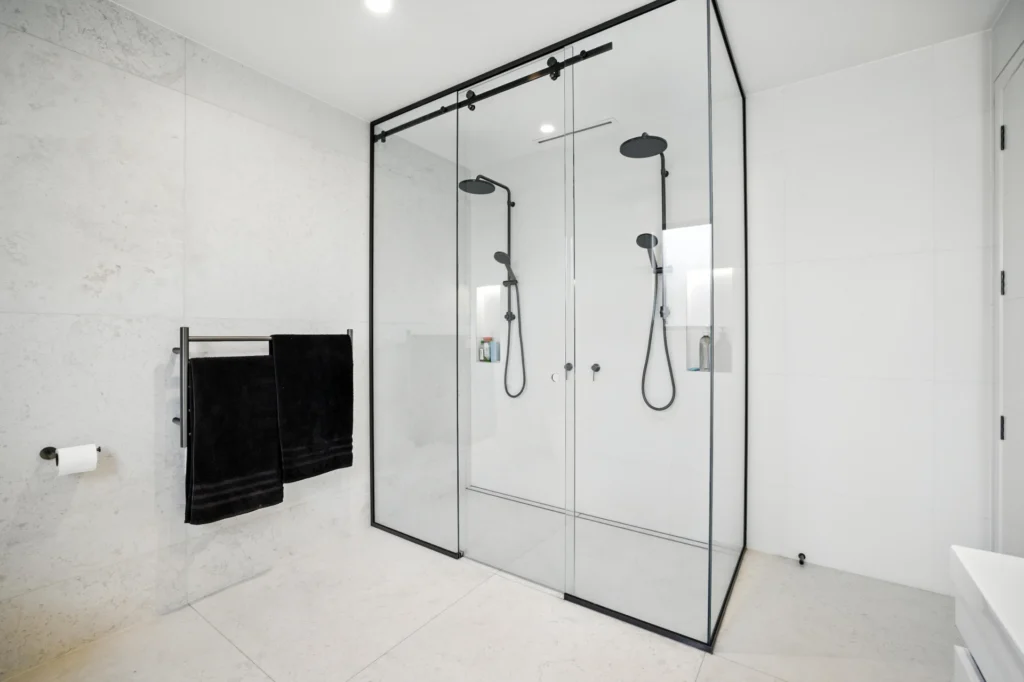
10 Practical Ways To Stop Bathroom Condensation In Christchurch
Bathroom condensation is more than just an annoying side effect of a hot shower. It leads to mould, water damage, and even long-term health issues if ignored. This is especially true in Christchurch, where the colder climate, older homes, and limited insulation can make the issue worse. The good news is you can reduce or even eliminate condensation with a few practical changes. Below are 10 tried-and-tested solutions you can apply today.
Use An Extractor Fan
An extractor fan is one of the most effective tools for controlling condensation. It pulls moist air out of the bathroom before it settles on mirrors, tiles, and windows. Every bathroom in Christchurch should have one installed, especially in homes with limited airflow.
When choosing a fan, check its power rating and airflow capacity (measured in litres per second or cubic metres per hour). A built-in timer or humidity sensor is a bonus. To get the best results, let the fan run for at least 15 minutes after a shower to clear remaining moisture.
Open A Window (Even In Winter)
Even when it’s cold outside, cracking open a bathroom window can make a huge difference. Natural ventilation helps exchange moist indoor air with dry outdoor air. It may feel uncomfortable for a few minutes, but it’s a simple and effective method to reduce condensation.
In Christchurch, where winter humidity levels are high and indoor temperatures stay low, opening a window, even just slightly, after a shower will help air circulate and reduce dampness on surfaces.
Wipe Down Surfaces After Use
Condensation sticks to the easiest surfaces: glass, tiles, mirrors, and painted walls. Leaving it there increases the risk of mould, especially in hard-to-reach corners.
Take 30 seconds after each shower to wipe down surfaces using a squeegee or microfiber cloth. Pay special attention to windows, shower glass, and tile walls. Drying these areas manually helps stop long-term moisture buildup that leads to rot or mildew.
Use A Dehumidifier
For bathrooms without proper ventilation or in rental homes where you can’t make structural changes, a dehumidifier is a strong alternative. It works by extracting moisture directly from the air.
In Christchurch, where winter dampness is common, small portable dehumidifiers are affordable and easy to use. Look for models rated for smaller rooms with auto shut-off features and water tanks. Some stores even offer compact, quiet units ideal for use in bathrooms.
Keep The Bathroom Door Open (When Not In Use)
Trapped air means trapped moisture. By keeping the bathroom door open after use, you allow moist air to escape into better-ventilated parts of the house.
This practice is especially helpful in homes with smaller bathrooms and no windows. Just be sure not to keep the door closed all day, as that will trap condensation inside and increase the likelihood of mould growth.
Add A Mirror Demister Or Anti-Fog Mirror
If you often deal with a fogged-up mirror after every shower, a demister is a small but practical upgrade. It’s a heated pad installed behind the mirror that prevents condensation from forming.
Anti-fog mirrors are another good option, especially for homes in Christchurch where temperature differences between surfaces and air can be significant. These upgrades don’t just keep mirrors clear, they also reduce the chances of mould forming behind fixtures.
Install An Extraction System Or Ducted Fan
If you’re renovating or building a new home, consider going beyond the standard wall-mounted fan. A ducted extraction system can service multiple rooms and move air more efficiently.
These systems are ideal for larger bathrooms or homes with poor airflow. Although they cost more upfront, they’re a long-term solution that reduces condensation, odours, and moisture-related damage in high-use areas like bathrooms.
Check For Leaks And Drips
Not all moisture in your bathroom comes from the air. Small leaks from taps, pipes, or even the toilet can quietly add to overall humidity levels.
Inspect under sinks, behind toilets, and around bath fixtures for signs of slow drips or pooling water. Fixing even small leaks will reduce condensation and improve overall air quality in the room.
Improve Insulation
Many older homes in Christchurch have poor insulation, especially in walls and windows. This leads to cold surfaces, which attract moisture quickly when warm air enters the room.
Upgrading wall insulation, adding thermal curtains, or switching to double-glazed windows will reduce temperature differences that cause condensation. These changes also help maintain a warmer, drier home overall.
Heat Your Bathroom
Warm air can hold more moisture than cold air. By heating your bathroom, you reduce the chance of that moisture turning into condensation.
Simple additions like a heated towel rail, wall-mounted heater, or underfloor heating can make a major difference, especially during the colder Christchurch months. Keeping the room slightly warm year-round can help prevent mould, peeling paint, and damp smells.
These 10 tips are simple, affordable, and work well in Christchurch’s climate. You don’t need to overhaul your bathroom overnight, but starting with one or two small changes today can help you stay ahead of condensation issues for good.
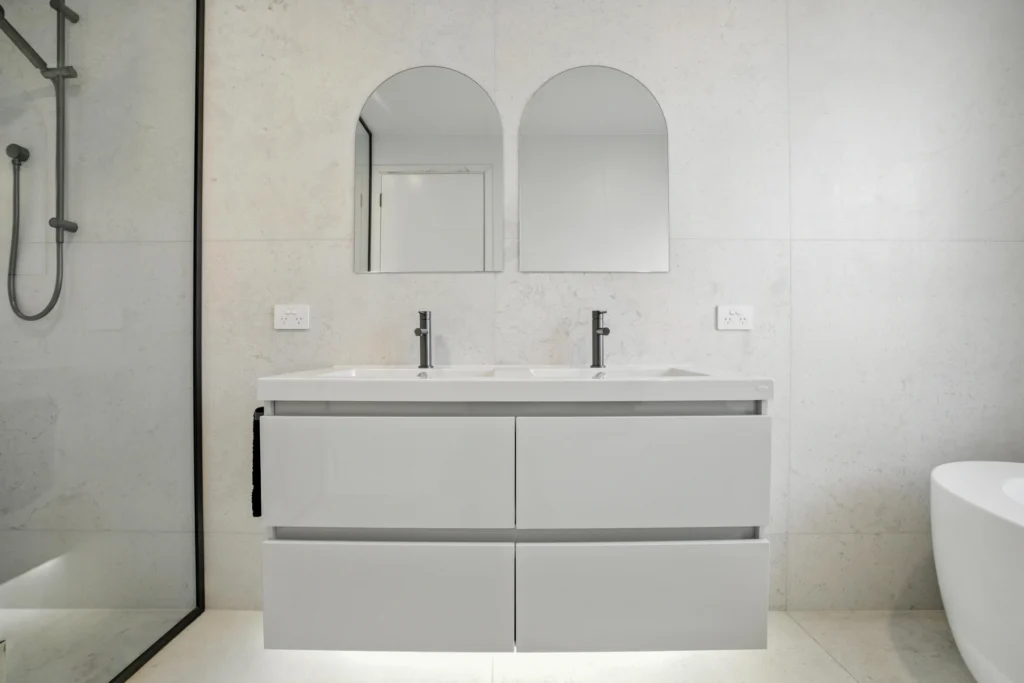
Christchurch-Specific Tips
Living in Christchurch comes with unique climate challenges that affect how condensation builds up in your bathroom. The city’s cold mornings, frequent damp spells, and older housing styles make it more likely for bathrooms to trap moisture and develop mould. Below is a breakdown of practical, location-specific advice that applies directly to homeowners and renters in Christchurch.
Weather Patterns: Cold Mornings And Damp Winters
Christchurch experiences low temperatures during autumn and winter, often dropping below 5°C in the early morning. These colder conditions cause warm bathroom air to hit cold surfaces, leading to visible condensation on mirrors, tiles, and windows. This effect is worse when heating is minimal or when the bathroom is closed off from airflow. Because of the city’s inland location, the temperature can vary sharply between day and night, adding to the problem.
To reduce the impact, it’s important to warm your bathroom slightly before using it. A simple wall heater or heated towel rail can keep surfaces above dew point, preventing the moisture from collecting. Letting the bathroom air out for 15 minutes each morning also helps control the moisture level inside the room.
Housing: Villas, Weatherboard Homes, And Rental Stock
Many homes in Christchurch were built decades ago and include features that contribute to poor bathroom ventilation. Classic villas and weatherboard houses often have single-glazed windows, timber walls, and outdated ventilation systems. These homes may lack insulation or contain gaps that allow cold air to settle in, making condensation more frequent and stubborn.
Rental properties in Christchurch may also be limited in terms of ventilation upgrades, especially if landlords haven’t yet met Healthy Homes Standards. Renters may notice persistent condensation even with the windows open or when using store-bought moisture absorbers.
To work around these issues, renters can use dehumidifiers, leave the bathroom door open after use, and dry surfaces manually. Homeowners have more options, such as installing ducted fans or insulating bathroom walls during renovations.
Local Services: Where To Buy And Who To Call
If you live in Christchurch and want to manage condensation effectively, there are local suppliers and services that can help.
- Where To Buy Extraction Fans Or Dehumidifiers:
You can find high-quality bathroom fans and dehumidifiers at stores like Bunnings, Mitre 10, and Harvey Norman. These retailers often stock models suited to New Zealand’s climate and housing types. Look for units with humidity sensors or timers to maintain airflow automatically after showers. - Contractors For Bathroom Upgrades:
Local builders and electricians in Christchurch are familiar with the condensation issues caused by regional climate and older homes. If you’re planning to renovate, look for contractors who specialize in bathroom ventilation and moisture control. Trusted names often appear in online directories like NoCowboys, Builderscrack, or Google Business listings with verified reviews. - Christchurch City Council Resources:
The Christchurch City Council offers guidelines and resources related to healthy homes, insulation advice, and ventilation requirements. You can visit their official website for information on building codes, moisture prevention, and any available subsidies for home upgrades: https://ccc.govt.nz
These Christchurch-specific solutions are essential if you’re dealing with recurring bathroom condensation. Whether you’re renting a small flat or renovating a larger family home, addressing local conditions head-on will help keep your bathroom dry, healthy, and damage-free.
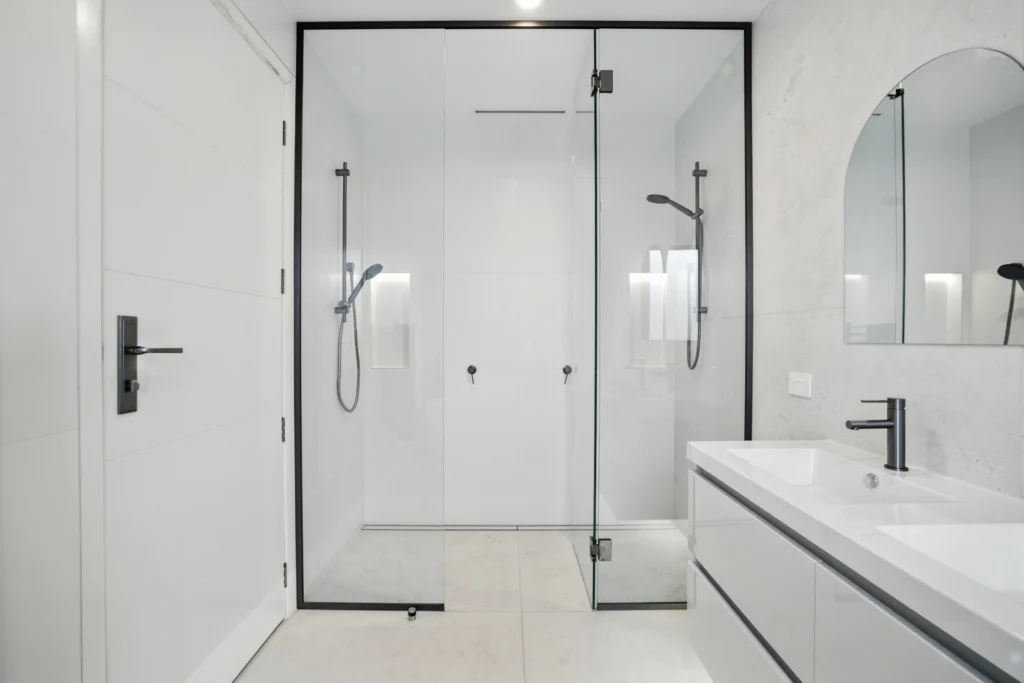
When To Call A Professional
There are times when bathroom condensation becomes more than just a minor inconvenience. While many issues can be handled with simple fixes like opening windows or running a fan, some problems are signs of deeper moisture damage that require expert help. Ignoring these signs can lead to long-term structural issues, health risks, and costly repairs, especially in Christchurch homes where colder temperatures and older construction styles can make matters worse.
One of the clearest signs it’s time to call a professional is the appearance of visible black mould. This isn’t just a surface-level stain, it often signals that moisture has penetrated behind walls or ceilings. Black mould can release spores that trigger asthma, allergies, and other respiratory issues. If you notice black patches around windows, corners, or near the ceiling, don’t try to scrub it away and hope for the best. It needs to be assessed and removed properly.
Another red flag is a musty smell that won’t go away. If your bathroom smells damp even after cleaning and airing it out, moisture may be trapped in the walls, floors, or insulation. This kind of persistent smell usually means mould or mildew has already developed somewhere hidden. Professionals can detect the source and deal with it before it spreads.
Persistent damp spots, especially ones that come back after drying, are also a sign of trouble. You might notice paint that bubbles, soft wallboard, or patches that feel cool and wet. These may point to poor insulation, plumbing issues, or a leak behind the wall. Addressing these requires tools and knowledge beyond the standard DIY kit.
So, who should you contact?
- Builders are a good starting point if your bathroom needs better ventilation, insulation, or structural changes. They can install ducting, add insulation to walls, or recommend better layout options to improve airflow and reduce condensation.
- Electricians are essential when it comes to installing or upgrading extractor fans. A weak or noisy fan may not meet Healthy Homes Standards. A licensed electrician can ensure your system runs efficiently and safely, especially in wet areas like bathrooms.
- Healthy Homes assessors are helpful if you’re renting or managing a property. They can carry out official checks to see if the home complies with ventilation, heating, and insulation requirements under New Zealand law. Their reports can guide what improvements are legally required and help protect tenants’ health.
While small changes like using a dehumidifier or wiping down surfaces can make a difference, some condensation issues point to larger problems that need expert attention. If you notice any of the signs above, it’s safer and smarter to get help early before the damage spreads. Professional advice can save you money, protect your home, and keep your bathroom dry and healthy all year round.
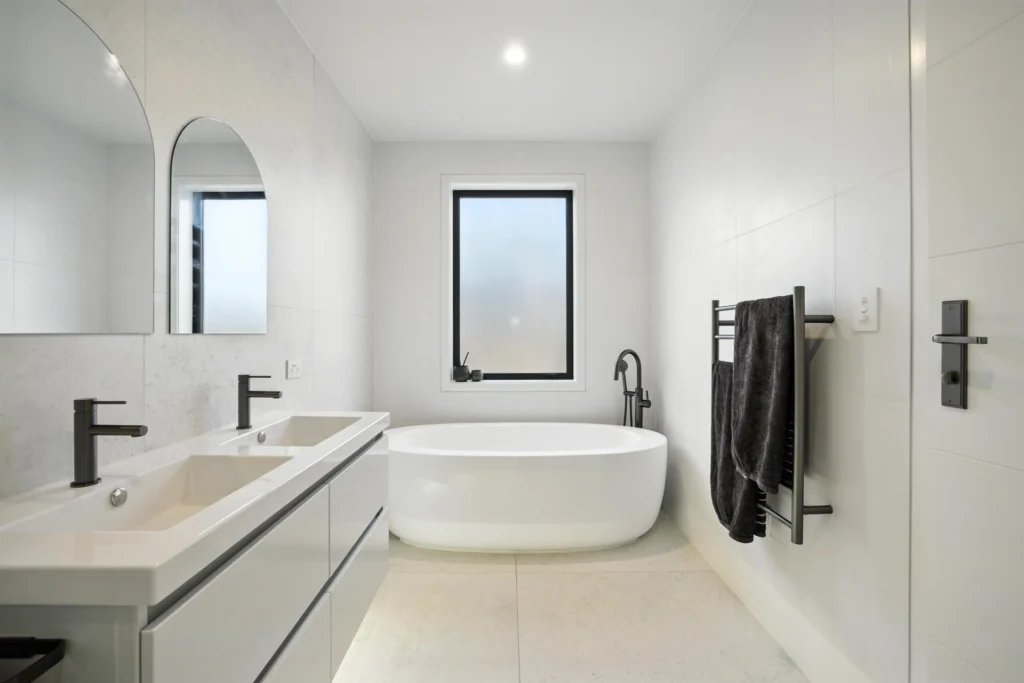
Tips For Renters In Christchurch
Living in a rental property in Christchurch can make it harder to deal with bathroom condensation, especially when you’re limited by tenancy rules. But the good news is, there are steps you can take, and legal rights you can rely on, to reduce condensation without overstepping your lease. Here’s what renters need to know.
What You Can Legally Request From Your Landlord
Under New Zealand’s Healthy Homes Standards, landlords are legally required to ensure your rental property meets minimum ventilation requirements. This includes having a working extractor fan in the bathroom. If your bathroom has no ventilation or the fan is broken, you have the right to request a fix or upgrade.
You’re also entitled to a home that is safe and free from issues that could affect your health. If condensation is causing mould or peeling paint, it’s more than just an inconvenience, it becomes a maintenance concern. In this case, inform your landlord in writing and keep a record of your request. If they fail to respond, you can contact Tenancy Services or submit a complaint to the Tenancy Tribunal.
Always refer to the Healthy Homes Standards checklist to support your case. This document clearly outlines ventilation, heating, and moisture control requirements for rental properties across New Zealand.
Cheap Fixes You Can Do Now (Without Breaking Tenancy Rules)
If you’re waiting for your landlord to take action, or just want to reduce condensation on your own, there are renter-friendly solutions that won’t breach your tenancy agreement:
- Use a portable dehumidifier: These devices can quickly reduce excess moisture in the air and are ideal for small spaces like bathrooms.
- Open windows after every shower: Even five to ten minutes of fresh air can help flush out humid air.
- Leave the bathroom door open when possible: This improves airflow and prevents moisture from being trapped.
- Wipe down wet surfaces: Use a squeegee or towel to dry tiles, mirrors, and glass after each use.
- Place moisture absorbers: Products like DampRid or similar can help draw moisture out of the air.
- Keep the bathroom warm: A small plug-in heater can help reduce surface condensation, especially during Christchurch’s colder months.
All of these fixes are temporary and non-invasive, meaning you don’t need approval from your landlord to use them.
Resources: Tenancy Services NZ, Healthy Homes Checklist
To protect your rights and make informed decisions, it helps to stay updated with official tenancy guidelines. Start with these two key resources:
- Tenancy Services NZ – This government-run website offers clear information on tenant rights, maintenance responsibilities, and dispute resolution. You can also find templates for communication and complaints.
- Healthy Homes Standards Checklist – This downloadable PDF outlines the legal standards landlords must meet. You can use it to check if your rental complies with ventilation, heating, moisture, and drainage requirements.
Whether you’re dealing with recurring condensation or trying to prevent it, being proactive as a renter in Christchurch can make a real difference. Use your legal rights, take small daily actions, and don’t hesitate to speak up when your home’s health is at stake.
Tired of dealing with bathroom condensation? Visit us to discover how we help Christchurch homeowners and renters fix moisture problems fast, with proven solutions that last.








FAQs: How To Stop Condensation In Bathroom Christchurch
What causes bathroom condensation in Christchurch homes?
Bathroom condensation happens when warm, moist air from showers or baths hits cold surfaces like mirrors, windows, and walls. In Christchurch, the colder climate and older housing styles make this more common, especially in winter.
Is condensation in the bathroom dangerous?
Yes, if left untreated, it can lead to mould growth, rotting walls or ceilings, and respiratory problems like asthma or allergies. It can also damage paint, wood, and tiles over time.
What’s the quickest way to reduce condensation after a shower?
Turn on the extractor fan during and after your shower, open the bathroom window for at least 10–15 minutes, and wipe down wet surfaces like mirrors, tiles, and glass.
Does using a dehumidifier in the bathroom help?
Yes, especially in bathrooms with poor ventilation or no windows. A compact dehumidifier removes excess moisture from the air, reducing the chances of condensation and mould.
Can I stop bathroom condensation without major renovations?
Yes. Simple actions like using an extractor fan, keeping the door open after use, and wiping down surfaces can make a big difference. Adding a heated towel rail or small heater also helps in colder months.
Why is condensation worse in winter in Christchurch?
Cold temperatures outside cool bathroom surfaces, making them more likely to attract condensation from the warm, moist air produced during showers. Less ventilation in winter also contributes.
Are landlords in Christchurch required to fix bathroom condensation issues?
Yes. Under the Healthy Homes Standards in New Zealand, landlords must ensure proper ventilation in bathrooms, usually by installing an extractor fan. Tenants can request improvements if this isn’t provided.
How do I know if my bathroom extractor fan is effective?
A good fan should run quietly, remove steam quickly, and ideally have a timer or humidity sensor. If mirrors stay foggy long after showers, the fan may be underperforming or need cleaning.
Can insulation help reduce bathroom condensation?
Yes. Insulating walls, ceilings, and especially windows reduces surface temperature differences, which means less moisture build-up. Double glazing is particularly effective in Christchurch homes.
What should I do if there’s mould from condensation?
Clean small patches with a vinegar solution or a mould remover. For larger infestations, consult a professional. Prevent it from returning by improving ventilation, heating, and drying out surfaces regularly.
Conclusion
Dealing with bathroom condensation in Christchurch can feel frustrating, but the good news is you don’t need a full renovation to fix it. By using simple solutions like running an extractor fan, opening a window after showering, using a dehumidifier, and wiping down wet surfaces, you can reduce moisture and prevent long-term damage. These small actions not only protect your walls, ceilings, and fittings but also help maintain your home’s value and create a healthier living space. Condensation isn’t just about comfort—it’s also about avoiding costly repairs and keeping mould and dampness away. If you’ve tried some of these tips or have questions about your specific bathroom setup, we’d love to hear from you in the comments below.

